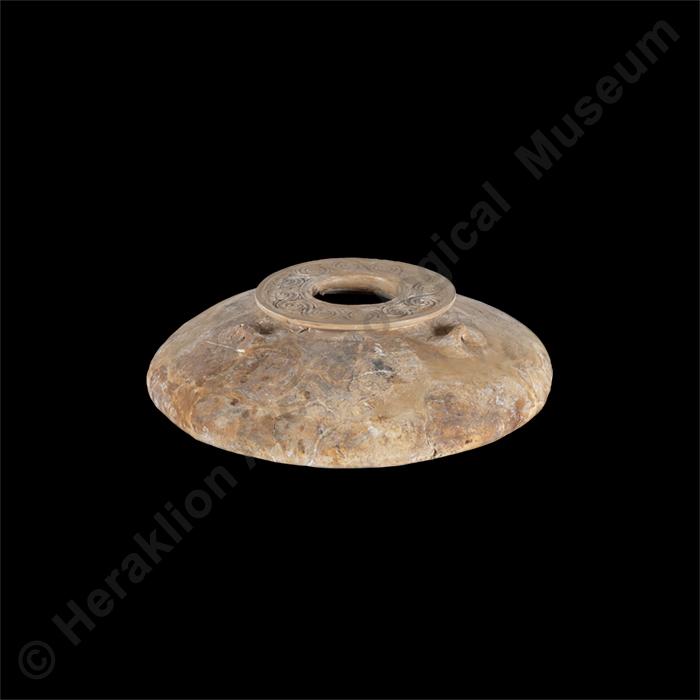Squat alabastron
Λ882
Stone (Gypsum)
Mended and restored.
Height: 12.5 cm. Diameter: 49 cm.
Knossos
Throne Room
Late Bronze Age. Final Palatial period, Late Minoan ΙΙΙΑ2 period.:
1375-1300 BC:
Gallery:
IXCase:
93Exhibition thematic unit:
Late Bronze Age - Final Palatial period (1450-1300 BC). The Knossos monopalatial systemPalace of Knossos - Final Palatial period
Description
One of five alabastra of local limestone found in the Throne Room of the palace of Knossos, the last examples of the palatial lapidary workshops of Knossos. The products of these workshops seem to have replaced the corresponding vessels of alabaster. Most have been found in rich tombs of Knossos. After the destruction of the Minoan centres in 1450 BC, Knossos was the only real centre of authority and administration in Crete until 1350 or 1300 BC. Continuing the line of the Minoan dynasties, the new rulers of Knossos and their class established themselves in the palace and assumed the glory and symbolic content of the old palatial complex. It has been argued that the alabastra from the Throne Room were used in some ceremony immediately before the destruction of the Knossian palace.Bibliography:
Waterhouse, H., “The flat alabastron and the last ritual in the Knossos Throne Room.” Oxford Journal of Archaeology 7.3 (1988): 361-367.Author:
G. F.Photographs' metadata
